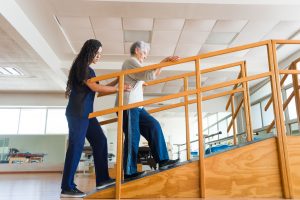
The Impact of Physical Therapy on Pelvic Floor Rehabilitation
Treatment GuidelinesNearly 10% of women between the ages of 20-39 are affected by weakness and injury to this region according to a study by the National Institutes of Health. As women age, that number grows to nearly 37% for those between the ages of 40-59. Some consider this the product of aging but it is widely viewed that this is not a normal or acceptable diagnosis.
When thinking about rehabilitation, the most common images that come to mind are those of an ACL recovery, sprained ankle, or other injury that is visible. But what about rehabilitation on things that are not seen? There are plenty of ailments that could be focused on that are not noticeable at first glance. More often than not, certain dysfunctions are not talked about or acknowledged.
An example of such has to do with the pelvic floor, which is an extremely important region of the human anatomy. For both men and women, this region controls various functions and it is an integral part of day to day life. Most commonly, the pelvic floor is discussed in reference to women’s health. When referring to the pelvic floor, one is referencing the layers of muscles, organs, nerves and connective tissue that sit in the bottom of the pelvis. The pelvic organs in females are the bladder, bowel and uterus. Following child birth, surgery, disease, or injury, the pelvic floor can become weak. This can lead to pain, weakness, sexual dysfunction and incontinence.
Nearly 10% of women between the ages of 20-39 are affected by weakness and injury to this region according to a study by the National Institutes of Health. As women age, that number grows to nearly 37% for those between the ages of 40-59. Some consider this the product of aging but it is widely viewed that this is not a normal or acceptable diagnosis. The most common cause of pelvic floor disorders is childbirth. The more a woman gives birth, the more likely she is to experience pelvic floor problems.
Many are embarrassed to discuss pelvic disorders with their health care professional. One of those health care professionals that may be of the most assistance in treating these cases is a Physical Therapist to many’s surprise. Physical Therapists are a forgotten resource at times. However, many specialize in addressing dysfunctions, no matter what the cause. Fortunately, exercises are available that will address the dysfunction of this region. One Physical Therapist that specializes in rehabilitation of this region is Emilee Van Hoven, and she was featured in a news story on WZZM, Grand Rapids. She discusses using various techniques that focus on internal and external manual therapy, pelvic floor strengthening exercises, core stability exercises, relaxation exercises, biofeedback, and other techniques.
Those who experience a possible dysfunction should know that this is a common condition and that there are treatments available to improve quality of life. Physical Therapists such as Emilee can specialize in this type of therapy and they will work with you to determine the most appropriate type of therapy.
References Below
http://www.wzzm13.com/news/health/good-to-go/rehab-designed-for-womens-health/386428139
http://www.uchospitals.edu/specialties/pelvic/faq/pelvic-floor-disorders.html





